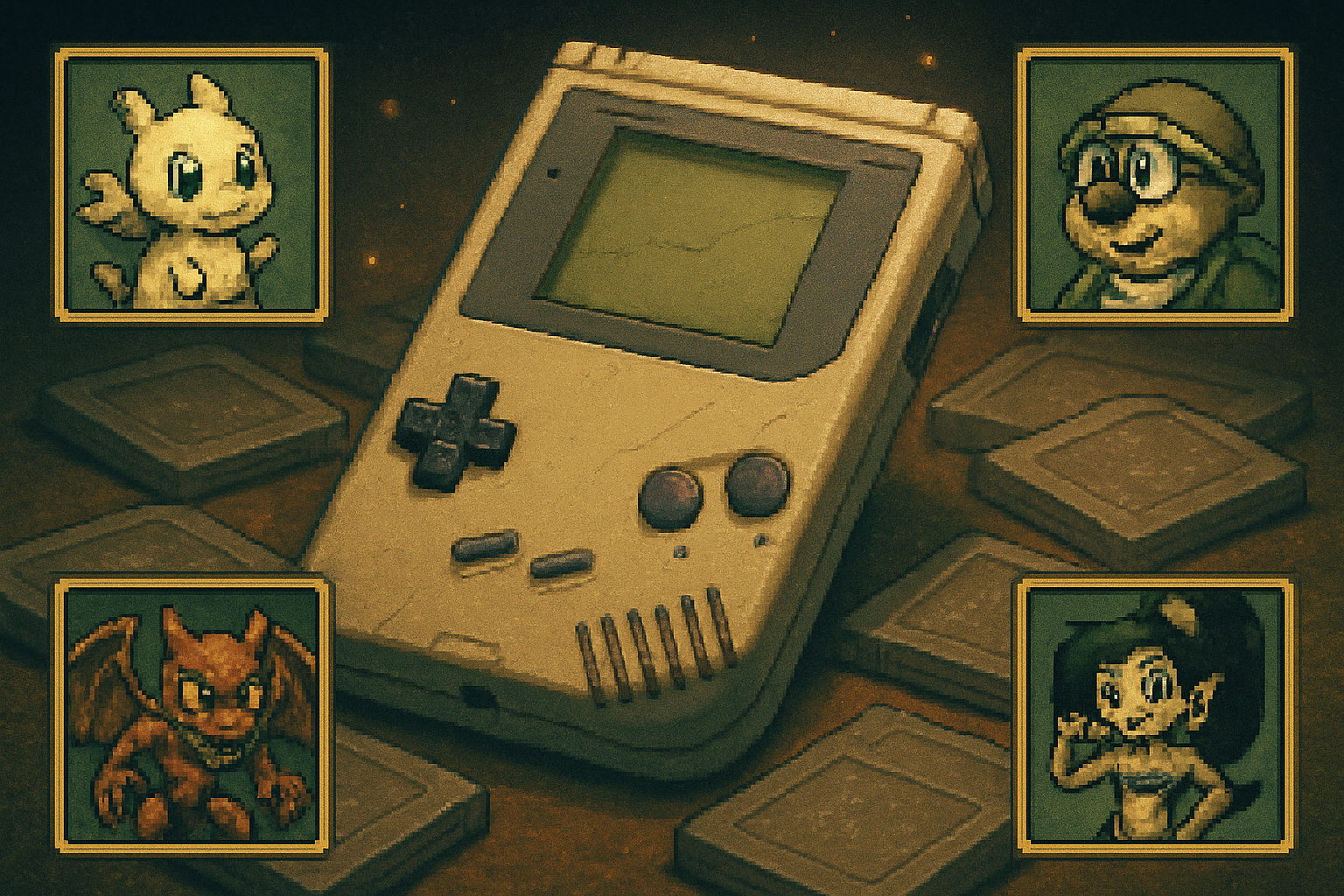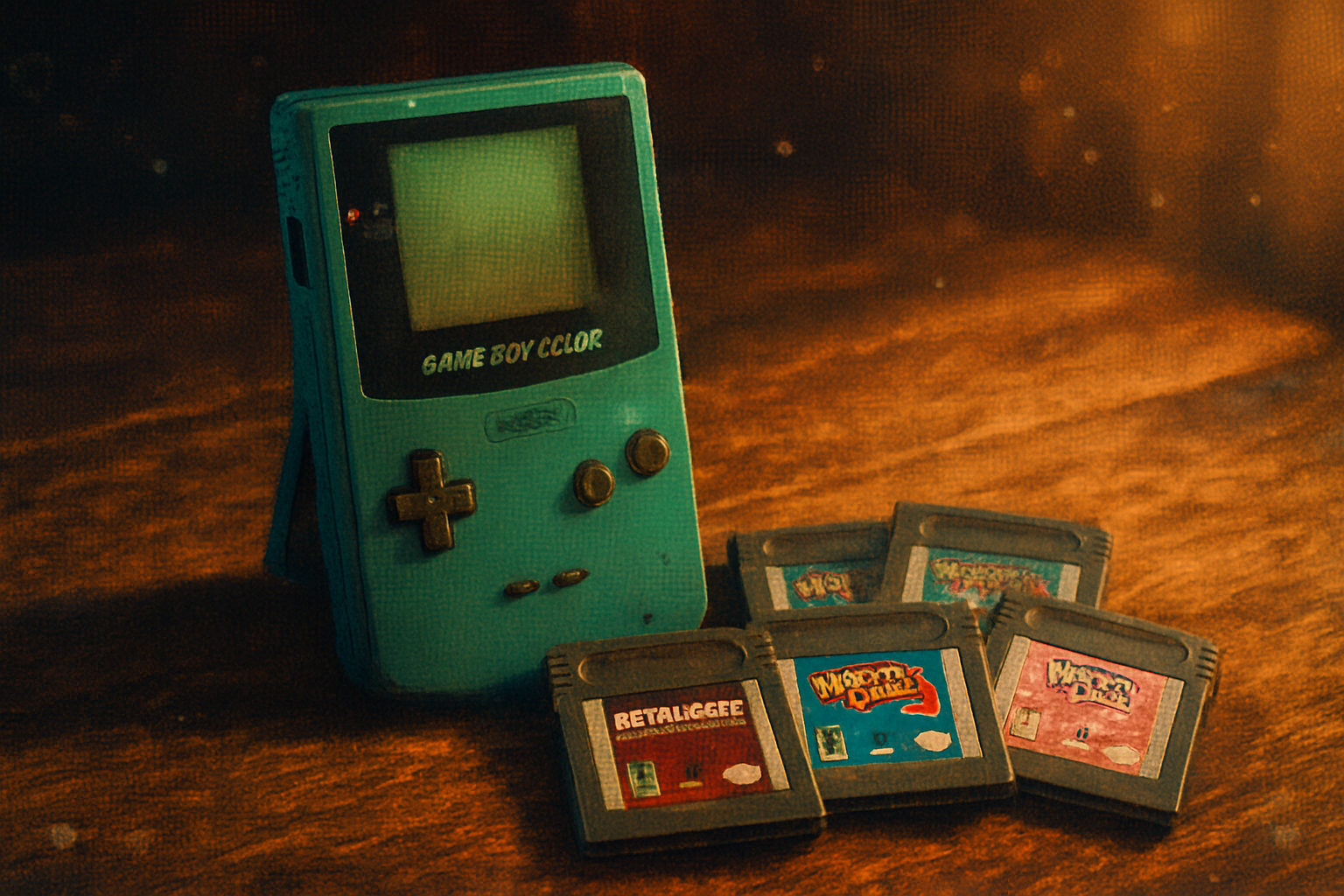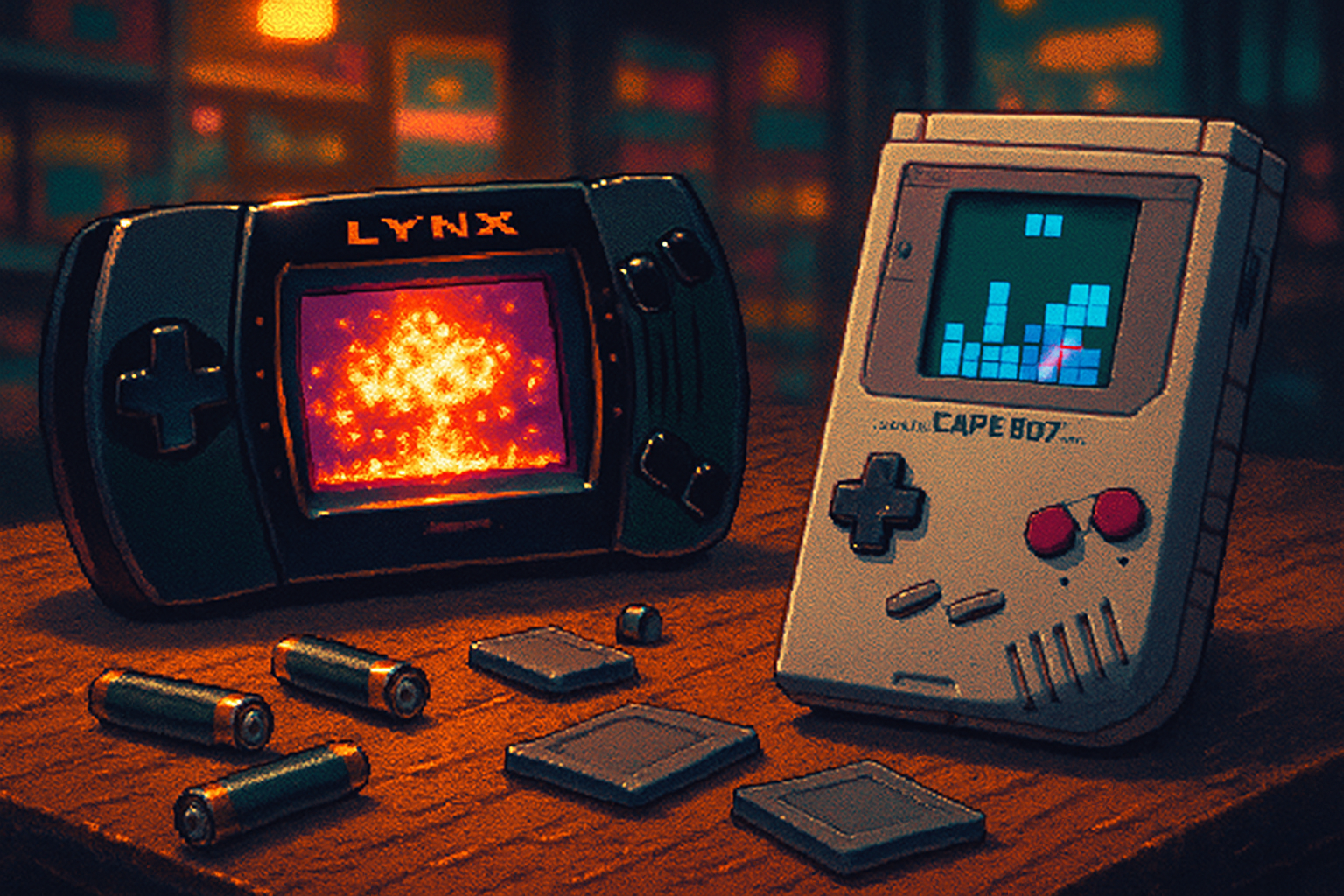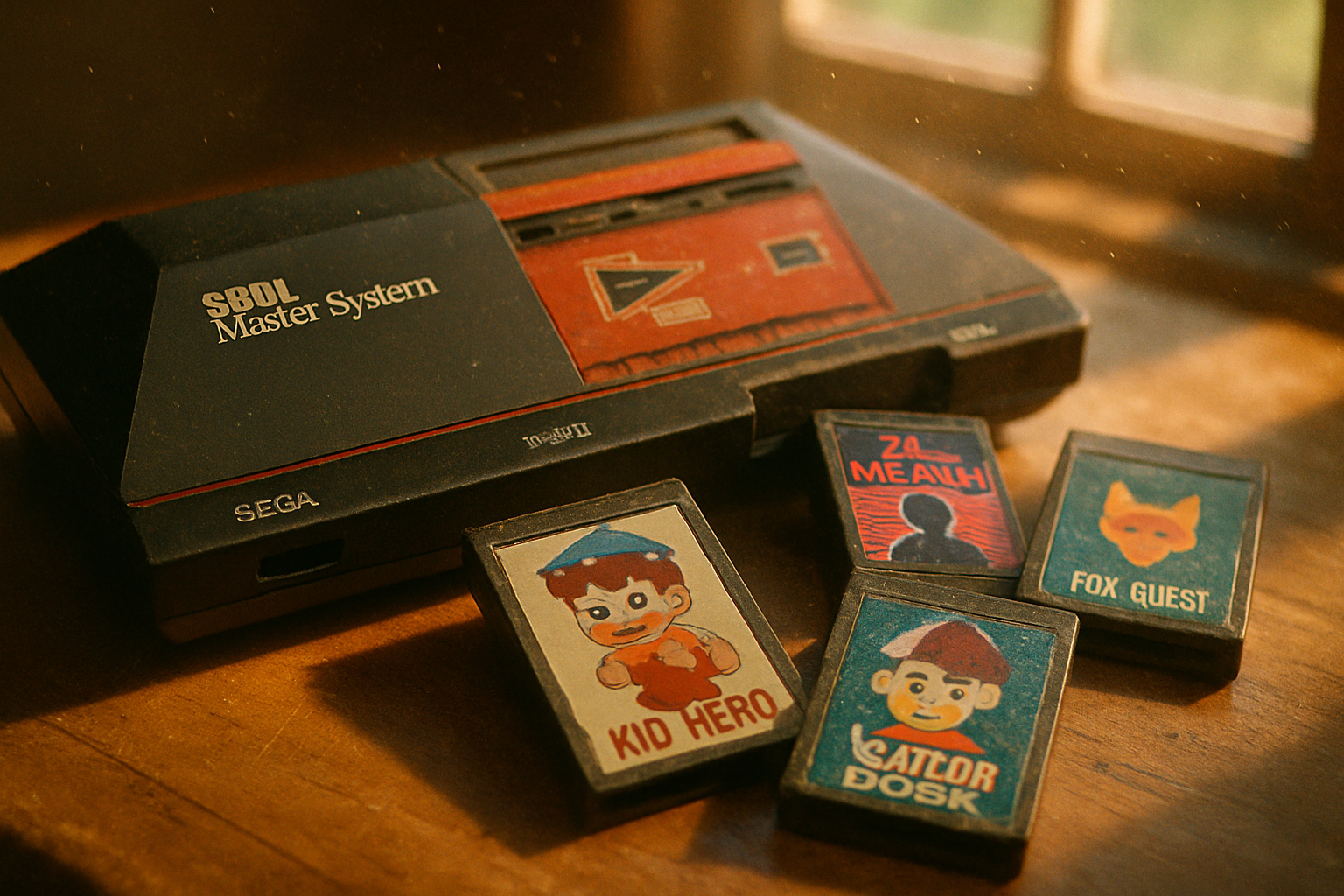· retrogaming · 6 min read
The Game Boy's Secret Legacy: Uncovering Hidden Gems and Forgotten Titles
A deep dive into overlooked Game Boy and Game Boy Color titles - why they matter, how they play, and the stories behind their creation. Rediscover eight underrated games that show the handheld’s surprising range.

Introduction
The Nintendo Game Boy (and its color successor) defined portable gaming for a generation. Its library is studded with household names - Tetris, Pokémon, Super Mario Land - but tucked between the hits are dozens of unusual, inventive, and now-forgotten titles that pushed the hardware in creative ways. This article highlights a selection of those hidden gems: what makes each game special, a look at core mechanics, and the development or release circumstances that contributed to its obscurity.
Why gems go hidden
- Late-cycle releases and regional exclusives - Some games arrived near the end of the Game Boy’s lifespan or were released only in Japan or small territories, limiting their reach.
- Niche design - Experimental mechanics and hybrid genres can be brilliant but hard to sell to mass audiences.
- Limited runs and tight print runs - Smaller publishers and late-era cart presses mean scarcity - and eventual obscurity.
These factors make revisiting the library rewarding: you’ll often find designers taking chances they couldn’t on a mainstream, AAA release.
Trip World - a melancholic platformer with subtle charm
Why it’s worth a second look
Trip World is an underrated 1990s platformer from Sunsoft notable for its unusual tone: brighter art and cute characters sit against wistful music and odd-level design choices. The result is a short, memorable experience that feels distinct from typical run-and-jump fare.
Gameplay mechanics
- Side-scrolling exploration with simple controls and gentle difficulty.
- Levels include hidden paths and small environmental puzzles; the design emphasizes mood and traversal over high challenge.
Behind the scenes
Originally released by Sunsoft for the Game Boy, Trip World never achieved mainstream recognition outside collector circles but gathered a cult following thanks to its art direction and music. For more background and release info, see the Trip World entry on Wikipedia.[1]
Gargoyle’s Quest - action-RPG meets platformer
Why it’s worth a second look
A Capcom spin-off of the Ghosts ‘n Goblins universe, Gargoyle’s Quest is surprising for a Game Boy game: it blends overhead-map exploration with side-scrolling combat and platforming, creating an oddly ambitious hybrid.
Gameplay mechanics
- Overworld sections where players explore towns, talk to NPCs, and choose routes.
- Side-scrolling action stages emphasizing platforming and projectile combat.
- A persistent progression feel rare on handhelds of the time.
Behind the scenes
Published by Capcom for the Game Boy, Gargoyle’s Quest stands out for expanding an arcade-style series into a portable action-adventure format. The combination of exploration and stage-based action makes it feel closer to a portable console RPG than many contemporaries.[2]
Mole Mania - Miyamoto’s little puzzle surprise
Why it’s worth a second look
One of those quiet Nintendo surprises, Mole Mania blends puzzle solving with light action and charming presentation. It’s the kind of compact design that rewards careful play rather than twitch reflexes.
Gameplay mechanics
- Puzzle-based stages where tunneling, pushing objects, and manipulating the environment are core to progress.
- A steady increase in puzzle complexity, with each area introducing new tools and obstacles.
Behind the scenes
Developed by Nintendo R&D1 and associated with legendary producer Shigeru Miyamoto, Mole Mania was produced late in the handheld’s lifecycle and flew under the radar compared to Nintendo’s marquee franchises. Its pedigree and clever design make it a rewarding revisit for puzzle fans.[3]
Shantae - a late-era GBC classic that went under the radar
Why it’s worth a second look
Shantae launched on the Game Boy Color in 2002 and is now famous for jumpstarting WayForward’s career, but at release it was a niche title with limited exposure. Its mix of platforming, exploration, and transformation mechanics belies the hardware’s limitations.
Gameplay mechanics
- Tight platforming with a twist - the protagonist’s hair is her primary weapon.
- Magic transformations allow access to new areas (Metroidvania adjacent) and create varied traversal options.
Behind the scenes
Developed by WayForward and originally published for the Game Boy Color, Shantae’s rarity and late release window kept it from mainstream sales at the time. Over the years it amassed a passionate fanbase, eventually leading to sequels and re-releases.[4]
Kwirk (Puzzle Boy) - elegant, portable puzzling
Why it’s worth a second look
Kwirk is a deceptively simple box-pushing puzzle game with a mechanical purity that makes it a perfect palate cleanser between heavier action titles.
Gameplay mechanics
- Grid-based puzzles featuring block pushing, rotating sections, and careful planning.
- Fast to pick up, pleasantly cerebral, and built for short sessions - ideal for a handheld.
Behind the scenes
Known as Puzzle Boy in some regions and Kwirk in others, the title is an example of how strong puzzle design thrived on the Game Boy because the system’s constraints favored thoughtful gameplay over flashy graphics.[5]
The Rescue of Princess Blobette - a small but sweet puzzle-platformer
Why it’s worth a second look
Part of the Blob series lineage, this Game Boy entry takes the idea of environmental puzzles and simplifies it for the portable format - resulting in a game that’s approachable and oddly charming.
Gameplay mechanics
- Puzzle-platforming that focuses on transformation-based problem solving and item usage.
- Short, self-contained stages that emphasize clever setups rather than long action sequences.
Behind the scenes
The Rescue of Princess Blobette is a neat example of how established console concepts were adapted to the handheld with economy and charm, even when production teams and budgets were smaller.[6]
Survival Kids (Game Boy Color) - early portable survival-adventure
Why it’s worth a second look
Survival Kids (released on Game Boy Color) took an unusual route for its time: a handheld survival-adventure where resource management, exploration, and multiple endings were core features.
Gameplay mechanics
- Scavenging, crafting-ish resource use, and maintaining health and status.
- Multiple approaches and endings, encouraging experimentation and replay.
Behind the scenes
As an early Konami attempt at a portable survival title, Survival Kids shows how ambitious ideas were being explored on the Game Boy Color, even if public attention tended to focus on larger franchises.[7]
How to approach these games today
- Emulation and re-releases - some of these titles have been reissued digitally or as part of compilations; others survive mostly as physical cartridges. Check official digital stores or verified compilations first.
- Physical collecting - rare cartridges are part of their appeal, but prices can vary wildly - research condition and region before buying.
- Play with patience - many of these games reward slow exploration and puzzle solving. Turn off the stopwatch mentality and enjoy the design.
Why these hidden titles matter
They serve as a reminder that constraints often breed creativity. On hardware with limited CPU and memory, designers explored novel mechanics, concise storytelling, and focused design. The Game Boy’s long run and diverse audience created a space where smaller teams could take chances.
Final thoughts
Looking back at the Game Boy library with an eye for the overlooked is rewarding: you’ll find designers experimenting with tone (Trip World), blending genres (Gargoyle’s Quest), or making bold bets late in a platform’s life (Shantae). These titles aren’t just curiosities - they’re part of the handheld’s secret legacy, offering compact, clever, and often surprisingly modern experiences.
References
[1] Trip World - https://en.wikipedia.org/wiki/Trip_World
[2] Gargoyle’s Quest - https://en.wikipedia.org/wiki/Gargoyle%27s_Quest
[3] Mole Mania - https://en.wikipedia.org/wiki/Mole_Mania
[4] Shantae (video game) - https://en.wikipedia.org/wiki/Shantae_(video_game)
[5] Kwirk - https://en.wikipedia.org/wiki/Kwirk
[6] The Rescue of Princess Blobette - https://en.wikipedia.org/wiki/The_Rescue_of_Princess_Blobette
[7] Survival Kids - https://en.wikipedia.org/wiki/Survival_Kids



